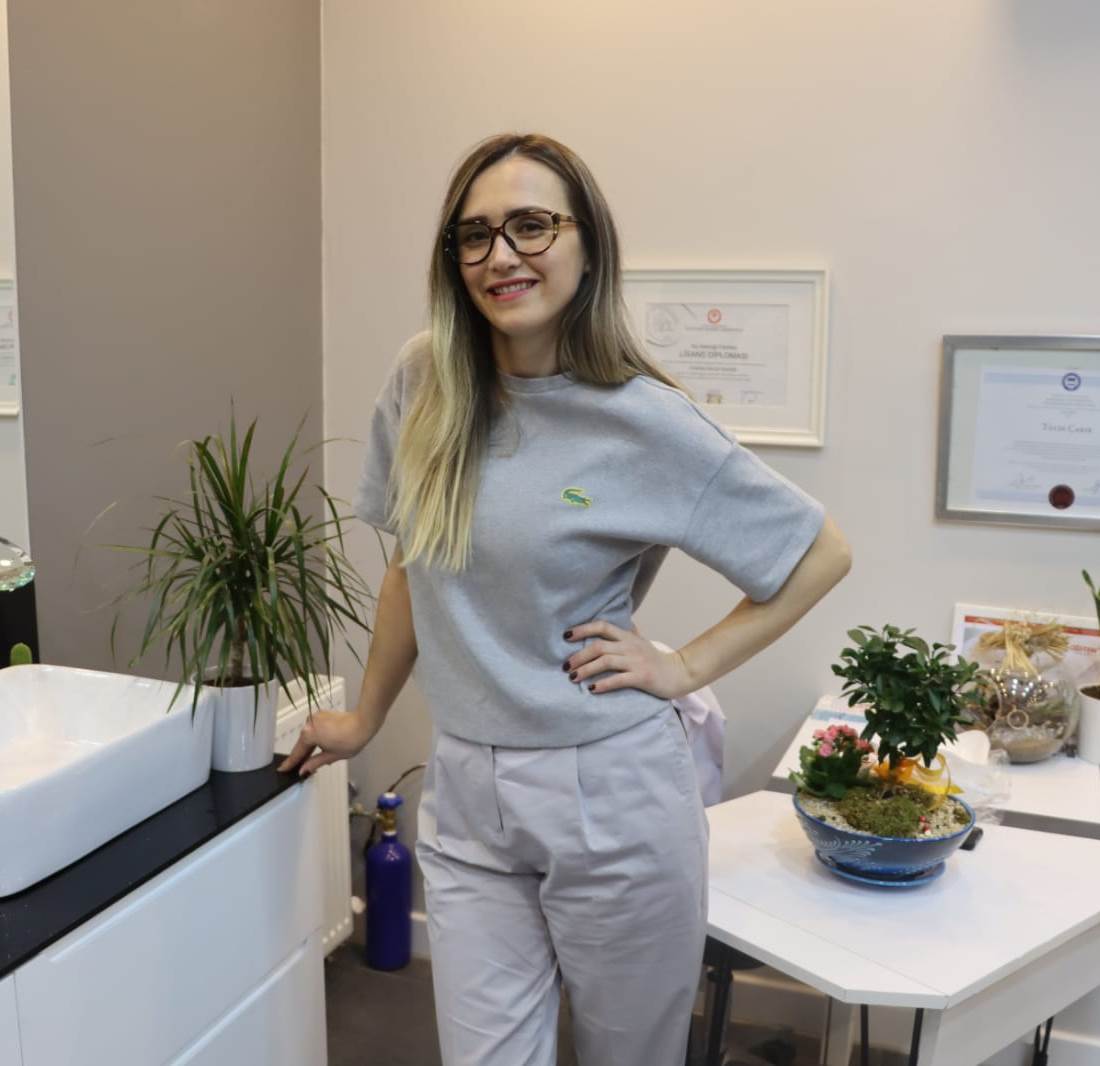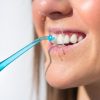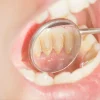Get information about Mandibular Retrognathia Class II Malocclusion treatment with the explanation of Specialist Dentist Merve Özkan Akagündüz.
Mandibular Retrognathia Class II Malocclusion

Mandibular Retrognathia or Class II Malocclusion, Doredent İstanbul
Lower jaw retardation occurs due to the lower jaw not developing or being positioned further back from the base of the skull. Sometimes, although the lower jaw is at a normal development level and position, the lower jaw may appear relatively behind in an individual whose upper jaw is forward. Here, an orthodontist should be consulted for a full diagnosis of the problem. In cases where upper jaw protrusion and lower jaw retardation occur together and the problem is serious, early intervention is required for effective treatment.
In diagnosing lower jaw retardation, the person’s profile, upper lip and lower lip position, whether there is stenosis in the upper jaw, and the distance between the lower and upper incisors are carefully evaluated through clinical examination. With the panoramic x-ray taken from the patient, the relationships of the teeth and jaw bones with each other and whether there is any pathology and the joint are evaluated. In addition, the patient’s cephalometric x-ray is also evaluated. With cephalometric x-ray, the position of the jaws relative to each other and the base of the skull, the relationships between the head and teeth, and the relationship between soft tissues and bone tissues are examined. In individuals in the growth and development period, skeletal age can be determined by the maturation of the cervical vertebrae visible on cephalometric x-rays. As a result of all these examinations, a personalized orthodontic treatment plan is prepared, taking into account the detection of problems and possible causes, the severity of lower jaw retardation, the patient’s expectations, the patient’s age and growth and development period.
A wide variety of treatment methods are available for the treatment of lower jaw recession, such as removable appliances, fixed intraoral appliances, camouflage treatments and jaw surgeries. For this reason, it may be useful to divide the treatment of lower jaw recession into two main groups: children and adults.
Lower Jaw Retardation in Children
The most effective age for lower jaw recession in children is generally between the ages of 11 and 13. Of course, this is not based solely on chronological age. Skeletal age is determined through wrist or cephalometric x-rays and the timing of treatment is decided accordingly.
If the child is at the beginning of a growth spurt, it may be necessary to wait for treatment. Since the period for effective treatment of lower jaw recession is not very long, orthodontic examinations every 6 months are of great importance in children. Since growth and development in girls is usually faster than in boys, the age at which treatment can be started may be earlier. You should not be late.
Treatment of lower jaw retardation can be done with the help of removable appliances that position the lower jaw forward, which we call monoblock or twinblock. The monoblock appliance is a one-piece appliance and is placed on the upper jaw. As the child closes his lower jaw, the appliance slides the lower jaw forward. The Twinblok appliance has two parts: upper and lower. When the child wears these two appliances, he has to position his lower jaw forward. These appliances, which position the lower jaw forward, change the direction of growth and development in the joint, and the skeletal problem is corrected if the child uses the appliance. If the child cooperates with the appliance, the treatment duration is on average 6-8 months. Since these appliances are removable, patient motivation is very important.
If the age range in which these devices can be effective has passed, but the child still has growth potential, fixed functional devices can be used. These devices are used by applying them to arch wires and brackets some time after brace treatment has started. The patient cannot put on and remove the appliance himself. The appliance is fixed and pushes the lower jaw forward. There are different types of fixed functional devices. Those that have been preferred more frequently in recent years allow other movements of the lower jaw and the patient adapts to the appliance more quickly.
When growth and development cannot be benefited, treatment alternatives applied in adulthood can be used.
Lower Jaw Retardation in Adults
If lower jaw retardation could not be intervened in childhood, the jaw problem can be resolved in adulthood by moving the lower jaw forward with orthognathic surgical operations. Orthognathic surgical operations are a process that is mostly carried out with orthodontic treatments, depending on the condition of the teeth. The patient begins braces or clear plate treatment and the teeth are prepared for surgery. Orthognathic surgery is like an intermediate session and the patient continues his orthodontic treatment for a while after the surgery.
Orthognathic surgical operations are operations performed under general anesthesia. Complications arising from surgery may develop and the patient is informed about this before making his decision.
If the patient’s lower jaw recession is mild or moderate and the patient’s profile is not disturbed, only dental correction options can be considered. When the severity of the problem is very mild, non-extraction treatments with upper molar distalization may be considered. To make this decision, all existing records of the patient must be thoroughly evaluated.
If the patient has a large amount of crowding in the upper jaw in addition to lower jaw retardation, camouflage treatments by extracting two premolar teeth from the upper jaw may be considered. Camouflage treatments are treatments applied when the patient is not considering orthognathic surgery. Orthodontic specialists actually always give priority to the ideal treatment option. However, this does not always coincide with the patient’s wishes, and at those times, treatments such as camouflage treatments come into play.
Treatments for lower jaw retardation are serious treatments. It is especially recommended to be performed by orthodontic specialists.
Merve Özkan Akagündüz
I was born in Edirne in 1988. In 2007, I began my master’s degree in Dentistry at Istanbul University (Çapa) Faculty of Dentistry and graduated in 2012.
In 2014, I started my specialization in the Department of Orthodontics at Süleyman Demirel University Faculty of Dentistry. In 2019, I earned the title of Orthodontist and was appointed to Çorlu ADSM, where I worked as an Orthodontic Specialist Dentist from 2019 to 2022.
As of 2024, I have been continuing my practice in my own clinic.








